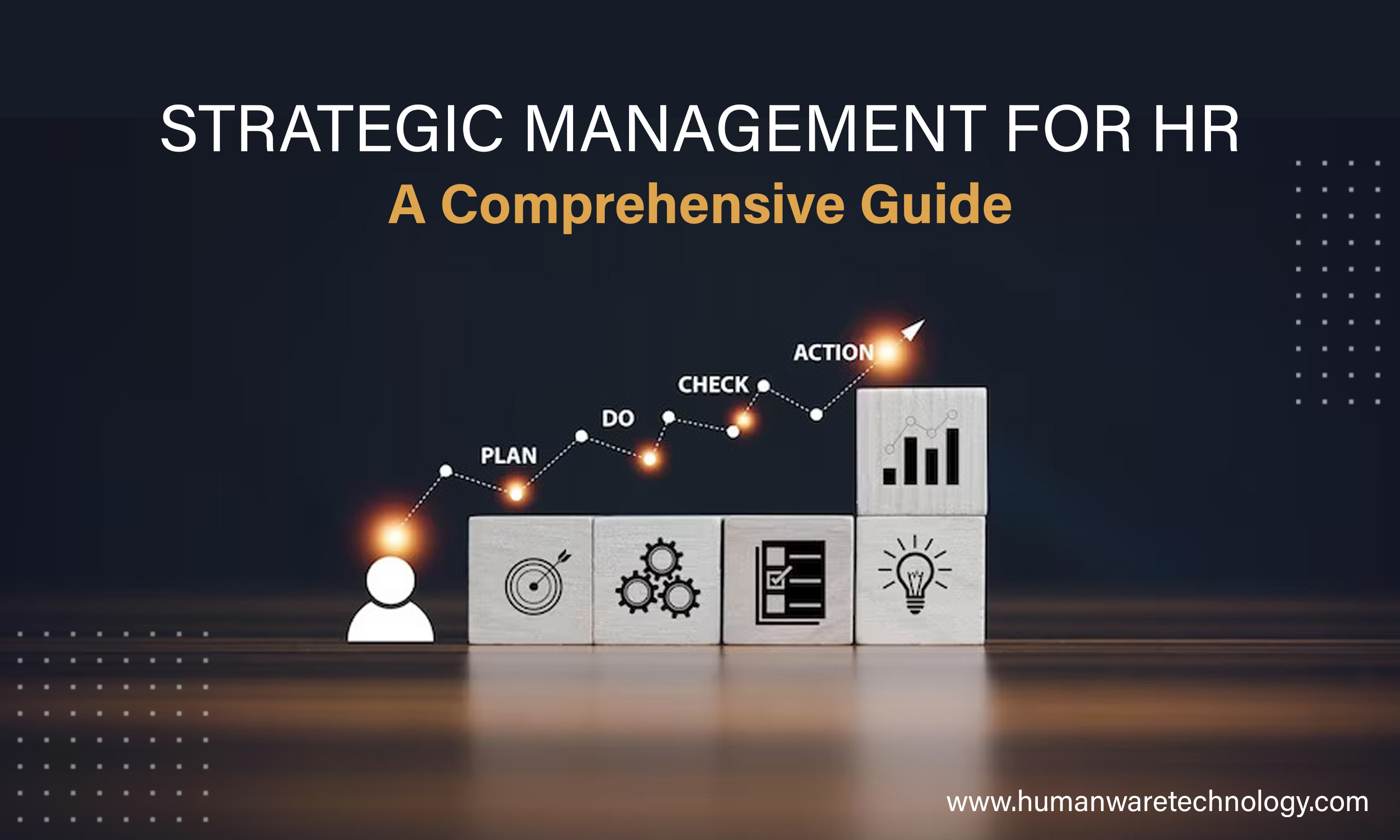
Strategic Management for HR: A Comprehensive Guide
Any HR professional or team seeking to accomplish its objectives and promote organizational success needs to use effective strategic management. Whether you're a seasoned HR professional or just starting out, this guide is a valuable resource for improving your HR strategy. This manual offers a thorough introduction of strategic management for HR, including essential ideas, recommended procedures and helpful implementation advice.
1. Understanding the Importance of Strategic Management for HR
Strategic management becomes more critical for any HR as it helps align goals with overall organizational objectives by developing a strategic plan. By developing a strategic plan HR can ensure that they are focusing on the most important initiatives and allocating resources effectively, this can lead to improved employee engagement, retention, and productivity, as well as better alignment between HR and the workforce. Additionally, strategic management allows HR to anticipate and respond to changes in the business environment, ensuring that they are always prepared to meet the needs of the organization.
2. Type of Strategic Management
- SWOT Analysis
- Balanced Scorecard
- Scenario Planning
- Change Management
SWOT analysis is a popular strategic management tool used by HR professionals to understand their organization's strengths, weaknesses, opportunities, and threats. This analysis helps HR professionals to identify areas where the organization can improve and areas where it is excelling. By understanding these factors, HR can develop strategies to capitalize on strengths, address weaknesses, take advantage of opportunities, and mitigate threats. SWOT analysis is a valuable tool for HR professionals to use when developing HR policies and practices that align with the overall goals of the organization.
The balanced scorecard is another popular strategic management tool used by HR professionals to align HR goals with organizational objectives. This tool helps HR professionals to measure and monitor progress towards achieving these objectives. financial, customer, internal processes, and learning are four perspectives of the balanced scorecard. By focusing on these perspectives, HR professionals can develop strategies that align with the overall goals of the organization and ensure that HR policies and practices are contributing to the success of the organization.
Scenario planning is a strategic management tool that helps HR professionals prepare for the future by considering different possible scenarios and developing strategies to address them. This involves identifying key uncertainties and trends that could impact the organization and developing multiple scenarios based on these factors. HR professionals can then develop strategies for each scenario, allowing the organization to be better prepared for any potential challenges or opportunities that may arise. Scenario planning is particularly useful in industries that are rapidly changing or facing significant disruption, as it allows HR professionals to anticipate and adapt to these changes.
Change management is a crucial aspect of implementing strategic plans successfully. It involves managing the transition from the current state to the desired future state, ensuring that employees are engaged and motivated throughout the process. Effective change management requires clear communication, stakeholder engagement, and a focus on building a culture of continuous improvement. HR professionals play a key role in change management, as they are responsible for ensuring that employees are equipped with the skills and resources they need to adapt to new ways of working. By effectively managing change, HR professionals can help organizations achieve their strategic goals and stay ahead of the competition.
3. Setting HR Goals and Objectives
Setting clear and measurable goals and objectives is a crucial part of strategic HR management. Goals should be specific, measurable, achievable, relevant, and time-bound and be aligned with the overall business strategy and should. Goals should be broken down into smaller, achievable steps and should be assigned to specific individuals or teams. Regular monitoring and evaluation of progress towards these goals and objectives is also important to ensure that HR is on track to achieve its strategic objectives.
4. Developing HR Strategies and Action Plans
Developing HR strategies and action plans is a key component of strategic management for HR. This involves identifying the HR goals and objectives that will support the overall business strategy, and then developing a plan of action to achieve those goals and objectives. This may involve identifying the skills and competencies that are required within the organization, developing recruitment and retention strategies, and implementing training and development programs to ensure that employees have the skills and knowledge they need to succeed. Regular monitoring and evaluation of progress towards these goals and objectives is also important to ensure that HR is on track to achieve their strategic objectives.
5. Implementing and Evaluating HR Strategies
Once HR strategies and action plans have been developed, it’s important to implement them effectively and evaluate their success. This involves communicating the strategies and plans to all relevant stakeholders, ensuring that resources are allocated appropriately, and monitoring progress towards achieving the goals and objectives. Regular evaluation and feedback are also important to ensure that the strategies are effective and to identify any necessary adjustments or improvements. By implementing and evaluating HR strategies effectively, organizations can ensure that they are able to attract, retain, and develop the talent they need to achieve their business objectives.